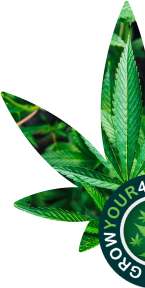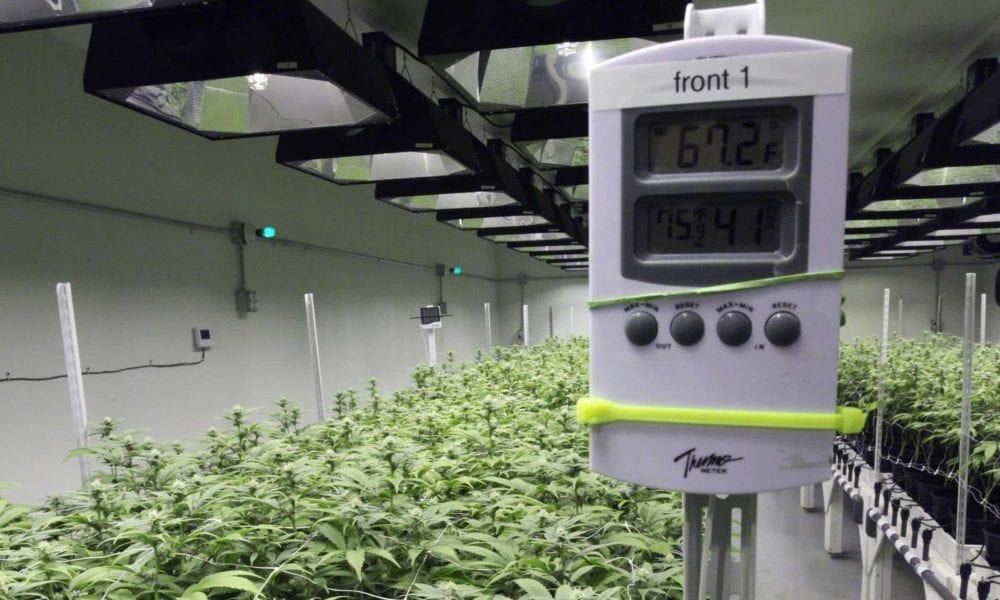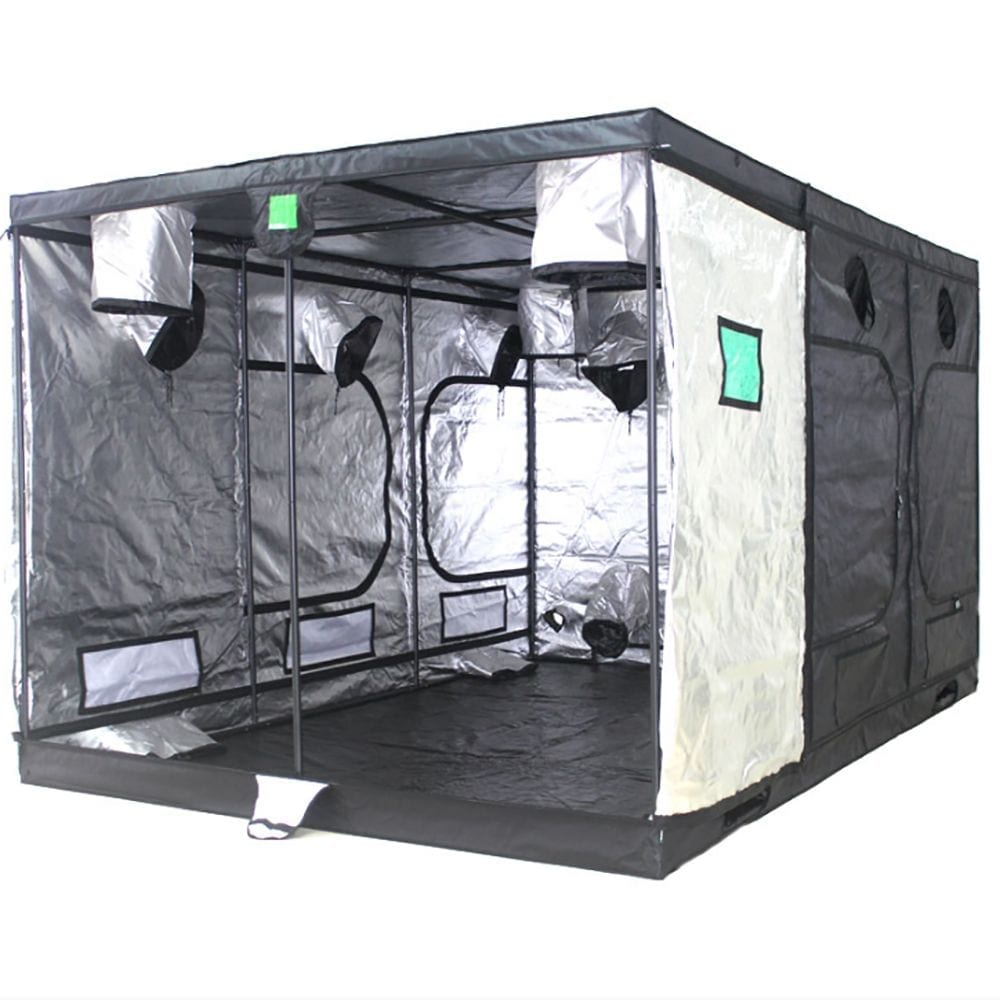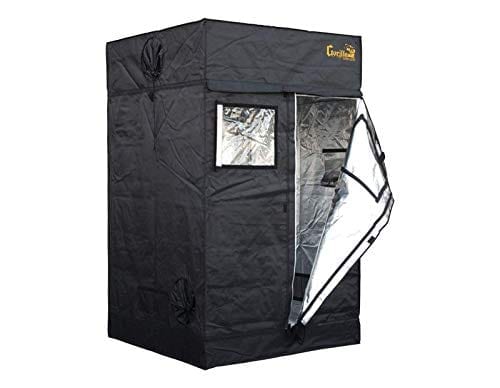Temperature is an important aspect of growing healthy plants. The wrong or right room climate can determine the health and survival of your plants. One thing you do not want is your grow room too cold. It will take more than a thermometer to ensure the proper environment for your plants.
A room too cold will harm your plants and stunt plant growth. It may cause harm to roots and leaves. There are several ways to provide heat to your room and ensure healthy plants. Once the proper temperature is attained, your plants will be on their way to healthy lives.
When is a grow room too cold?
Different times of day will impact the temperature. It is important to know how to deal with your grow room too cold at night.
Throughout the day, the temperature will rise and fall with it being the coolest at night. It is vital to always know the temperature and to be able to check at it any time.
A way to test if your grow room is the proper temperature is if you’re cold than the room is too cold. The last thing you want is your grow room to be cold, finding out hours later, and the damage is already done. A remote thermometer is highly recommended.
Some of them can be set to send an alert if the temperature goes outside the designated temperature range. The sooner you are aware of a temperature problem, the sooner it can be addressed. That’s why we recommend a remote thermometer that is compatible with your phone.
The best time heat the room is at night and during winter. Those are times when the temperature is guaranteed to drop.
Symptoms of grow room too cold
A grow room being too cold may cause irreversible damage to your plants. Thus, this decreases the value and causes all your efforts to be for nothing. To avoid that, you should familiarize yourself with the symptoms.
There are a few ways to determine if your grow room is too cold. Those are: plants losing color, the growth of mold, and change of density.
Expect a change in smell, color, and taste as well. Insects and other pests also pose a risk too. The leaves yellowing or curling can also be an indicator that the room is too cold.
Problems of a cold grow room
Along with problems to the plants, a grow room too cold will have other problems. Those problems naturally impact the plant.
The colder the room, the higher the oxygen level, less germination, and the dampening of the environment. Higher oxygen levels make the water cooler. This results in the roots absorbing too much oxygen, which leads to poor plant growth.
Germination is the process of growth for a plant. Low germination will result in less plant reproduction. The dampness of the environment will lead to the growth of mold. Mold growing on the plants will greatly damage them.
The ideal temperature for your grow room
The grow room should not be too cold or too warm. The dangers of the room being too cold have been discussed in the previous chapter. There are other dangers associated with your grow room being too warm.
Those dangers are root rot, mold, and the leaves drying out to name a few. It’s important that your grow room is at the ideal temperature. The ideal indoor temperature is between 65 to mid 80 degrees Fahrenheit. The temperature should have about a 10-degree difference between night and day for optimal results.
How to maintain the ideal temperature?
As we have already discussed, temperature control is important for healthy plants. There are several ways to maintain the ideal temperature.
Insulation, light & air
A few ways to balance the temperature is insulation, light, and air circulation. To insult your plants, wrap them in blankets or aluminum foil. It may be worth to buy LED lights or another form of lighting in order to provide them with proper heating. There are also grow room heaters available.
A way to improve air circulation is a standby fan. It will circulate the air throughout the room preventing hotspots and allowing it to reach the plants. One way to help keep your grow room cold is to invest in some heat lamps. Heat lamps can provide some much-needed warmth.
Another way is to place the plants off the floor. Hot air rises so placing the plants on a table will help. If elevating the plants is not an option, consider purchasing a heating mat. The plants can be placed on the mats in order to provide some protection from the cold floor. An infrared or tube heater is also another option. Tube heaters are a great way to provide heat to the plant. The best place for heaters is on the floor, so they are aimed directly at the plants’ roots. The plants should be elevated for this to work properly.
Heater
Another affordable way to heat your growing room is to use water. Take a container of water and place it in sunlight and once the water has warmed up, put it in your growing room. The heat from the water will release thermal energy and warm up the room.
Alternatively, instead of using sunlight, another source of heat can be used to warm up the water. A more traditional way to heat the room is using a space heater.
Concluding: grow room too cold
Temperature control in your growing room is a priority. Too cold or too hot will have devastating consequences for your plants.
As discussed previously, the dangers of the temperature being too cold may lead to mold, lack of plant reproduction, and poor plant growth. To heat up a room, there are various ways to do so. A space heater, insulation, and heat lamps are effective ways to make sure your grow room is not too cold.
Obviously, a thermometer is a vital tool as well. The temperature should remain between 65 to 80 degrees Fahrenheit.
Any lower than that and there is a risk of harm to the plants. Once the ideal temperature is established in your growing room, your plants will be a step closer to living healthy lives.
Table of contents





